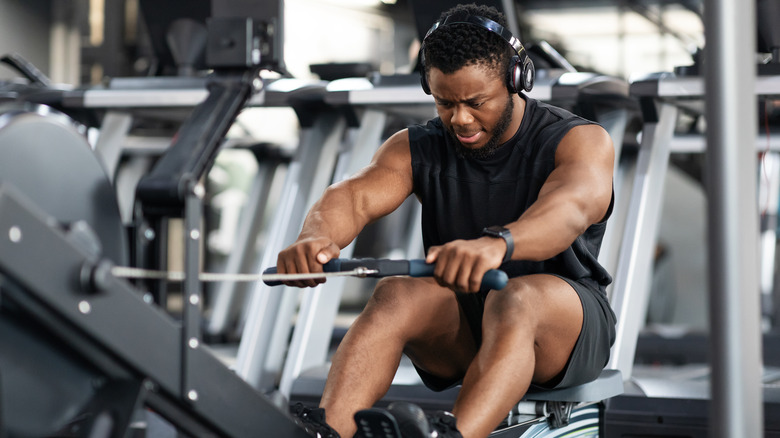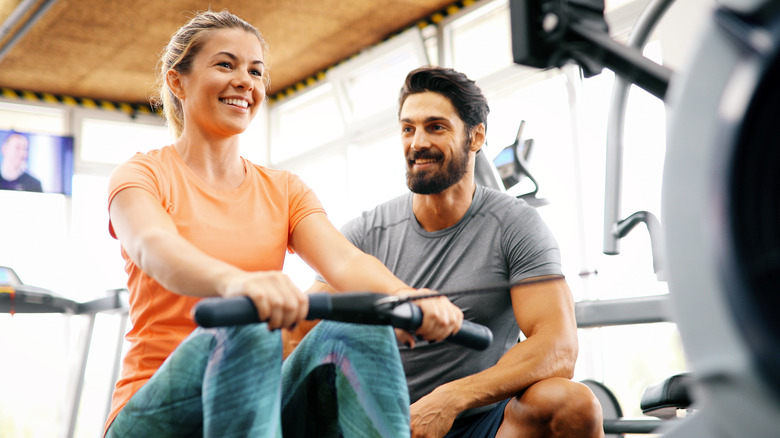Should You Add Rowing To Your Fitness Routine?
If you've ever spotted someone using a rowing machine at the gym and wondered if you should add rowing to your fitness routine, look no further. A rowing machine, or ergometer, is a piece of workout equipment that mimics the motion of the rowing stroke that is required to paddle a boat on the water (via Shape). While the motion itself is simple enough, rowing is actually a fairly intense workout. To perform a rowing stroke, start with your legs extended, bring your core forward, and use your hands to bring the handle of the rowing machine to your chest. Then, reverse this position and repeat.
Although rowing may seem like it's only an upper-body workout, it can actually engage many different muscle groups in your body, the bulk of which come from your legs and core. "Rowing is about 60% legs, 30% core, and 10% arms," ACSM-certified personal trainer Joseph Ilustrisimo told Shape. "Most of rowing will be working out your hamstrings and booty, but only if you are hinging properly." However, your core should be engaged the entire time.
The benefits of rowing
As a result, rowing can have many important health and fitness benefits. For instance, rowing is a great way to build muscle mass and endurance. According to Healthline, rowing primarily targets your calves, glutes, and quadriceps, but it can also help tone and engage your pecs, arms, abdominal muscles, and obliques, giving you a full-body workout. Doing this over an extended period of time can strengthen these muscle groups and help build muscular endurance.
And since rowing is a low-impact workout, it's a good way to burn a lot of calories without putting too much stress on your joints, making it the perfect alternative to the treadmill and elliptical machines. Not to mention, as a cardio workout, rowing can work out your lungs and cardiovascular system, which includes your heart, blood, and blood vessels. If there's any workout you should consider adding to your fitness routine right now, it's rowing.


